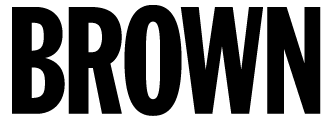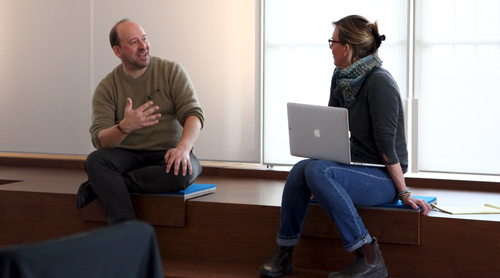Over the weekend, the Brown Institute hosted an experiment in interdisciplinary collaboration. On Saturday, March 25, we gathered 24 journalism students and 7 PhD students from Columbia’s Lamont-Doherty Earth Sciences campus to collaborate on new stories about our changing climate.
We started the day with a presentation by Gavin Schmidt, Director of the Goddard Institute for Space Studies at NASA, which brought students up-to-speed on the latest news and developments in climate science, and highlighting some of the ways in which published journalism has involved collaborations with researchers in the field. Following his presentation, Susanne Rust, former investigative reporter for The Center for Investigative Reporting and Director of the Environmental Reporting Fellowship at the Columbia Jounalism School, conducted an engaging discussion with Dr. Schmidt on how journalism can better respond and inform the public on issues of climate. The main takeaway: now more than ever, scientists and journalists need to work together on stories about our planet. This set us up perfectly for the second half of the day…

In the afternoon, we got our hands dirty, pairing journalism students with doctoral students from Lamont-Doherty to build on our morning discussion. This started with a rapid ideation exercise, where groups were challenged to take non-environmental articles from major news outlets–a story about housing developments, a wedding announcement, a pasta sauce recipe–and produce a climate angle to accompany the story.
So, for example, a team of MS candidates from journalism and a student studying ocean science were given an article that focused on the White House’s plans for constructing Trump’s wall on the border with Mexico. After 20 minutes the students had an angle. Stream and river flow into the Gulf of Mexico has a tremendous impact on coral growth in the region. Clean river discharge has a neutral-to-positive effect on reef health. But with major construction taking place across hundreds of rivers and streams along the border, run-off and construction debris could have dramatic impact on the coral of the region.
The goal of this exercise was to promote collaboration between the scientists and journalists — moving them from “expert” and “reporter” to collaborators. Some articles were harder than others to view through a climate lens, but we were surprised and delighted by the incredible creativity of teams!

Following three rounds of rapid story ideation, groups prepared pitches for new stories altogether. From bird migrations to profiles of new climate scientists facing an uncertain funding and research future. This weekend was a testament to interdisciplinary collaboration and the need for journalists to work alongside scientists when reporting on issues of climate change. With each round of exercise, our angles and pitches got deeper and deeper. It was gratifying to watch.
The Lamont-Doherty PhD Students involved were Weston Anderson, Ocean and Climate Physics; Alex Boghosian, Marine Geology and Geophysics; Logan Brenner, Biology and Paleo Environment; Kyle Frishkorn, Biology and Paleo Environment; Laura Haynes, Geochemistry; Nathan Lennsen, Geostatistics and Modern Climate; and Ruth Oliver, Biology and Paleo Environment.
For the past few years, the Brown Institute has been attempting to better understand how journalism can respond more productively to climate change. We’ve partnered with the UNDP and IRI to help African-based Meteorological agencies provide new ways to turn weather and climate data into information for farmers and other at risk communities. We’ve partnered with the Red Cross Red Crescent Climate Centre and the Metropolitan Museum of Art to contextualize the impacts of and potential adaptation models for climate change through food and art. And we’ve partnered with the Sundance Institute to think through new models of documentary to better engage and inform around the topic of climate change. This weekend, however, we focused inward, bringing our previous work into the Journalism School.
More information about the event can be found at transparency.brown.columbia.edu.

